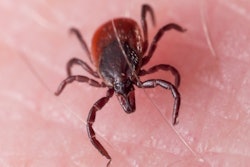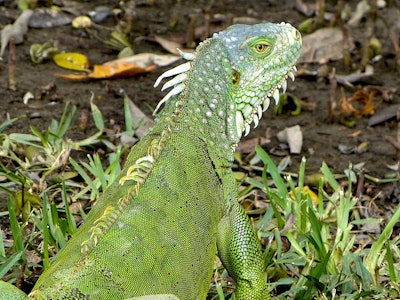 Photo: Pixabay
Photo: PixabayIt is extremely important for corporate offices and homeowners association gardens to provide an inviting and aesthetically pleasing appearance. They not only serve as a gateway into the property, they also have a direct reflection on the atmosphere inside those gardens.
A nicely maintained garden landscape says a lot about not only the property, but also the people inside. Annual flower arrangements, properly manicured trees, shrubs and turf are all important factors to locations such as these. Since these professional landscapes are found either in open or urban settings, intruding or displaced animals tend to wander in and may cause damage to both the landscape and its caretakers. Various animals such as deer, geese, wild hogs, armadillos, moles, iguanas and others can be encountered. Following is a description of the biology and management of each pest.
*Please note that nuisance wildlife may be protected furbearers under state and federal law. Always check with local authorities prior to trapping, baiting or killing wildlife.
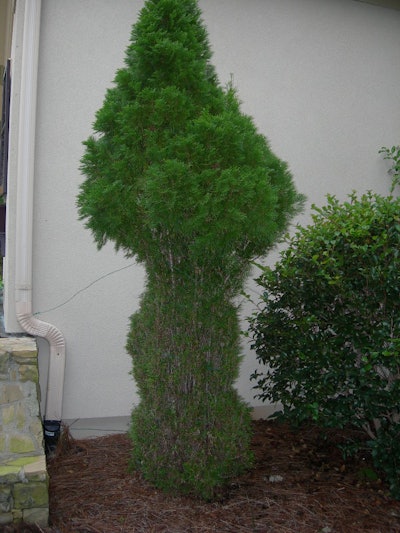 Deer browsing damage to arborvitae.
Deer browsing damage to arborvitae.Photo: Dr. A.D. Ali and Manny Nassar
White-tailed deer, Odocoileus virginianus, is native to the Americas. Deer can be seen both in the daytime as well as during the night. Signs of white-tailed deer disturbance include foliage browsing, plant consumption, dislodged root balls, antler rubbing on bark and deer prints.
They can cause serious damage and possible death to herbaceous plant material if not treated properly and in a timely manner. During certain times of the season in some areas, it is legal in the U.S. where they can be killed with bow-and-arrow or rifle hunting. Outside of the hunting season, repellants may be used to deter feeding on shrubs and flowers. Some of the more effective products include Deer Pro, Deer Off, Deer Scram and Liquid Fence.
Canada geese, Branta canadensis, are distinguished by a black head, white chinstrap and light brown body. This goose is the largest of all geese species and has a wingspan of up to six feet. Canada geese can be found near bodies of water in grassy areas and grain fields. They feed on grasses, sedges, grains and berries.
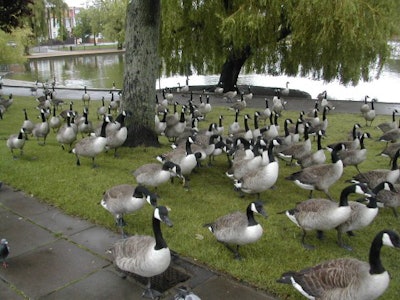 Canada geese near a pond.
Canada geese near a pond.Photo: Dr. A.D. Ali and Manny Nassar
A single Canada goose is capable of defecating as many as 92 times a day and creating up to 1.5 pounds of waste in one day. This ultimately causes sites to be unusable by humans, due to the amount of feces left covering the ground. The formation of algae blooms in nearby bodies of water is another undesirable consequence of their activity. Geese management includes:
- Exclusion and habitat modification. Create steep banks around lakes, fill with large rip-rap boulders or erect a 3-foot fence around lake/pond.
- Repellants: ReJeX-iT; Flight Control.
- Chasing by a trained border collie‘s produces excellent results.
- Trapping and relocation. This is most effective in late June/early July when adults are molting, and goslings are too young to fly. Federal and state permits may be needed.
Wild hogs, Sus scrofa, in North America are believed to be descendants of domestic pigs that escaped after being brought here by the Spaniards. They range in size from 50-400 lbs, with the largest ever recorded at 1,051 lbs. They reproduce year-round with peak litter production in the spring. A sow can produce up to 12 piglets in a litter and may have two litters per year.
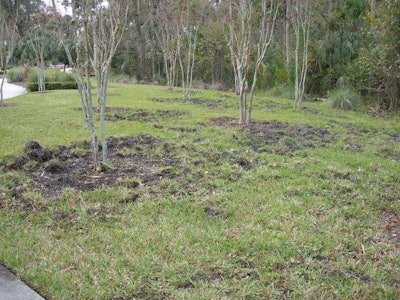 Wild hog damage to turf.
Wild hog damage to turf.Photo: Dr. A.D. Ali and Manny Nassar
They are omnivorous and usually feed at night. Their rooting in the ground destroys managed turf areas. In addition to damaging turf, they can be dangerous if confronted and will charge a human. Wild hogs can run up to 30 mph and jump fences 3 feet high. Wild hogs are normally trapped and relocated as a means of control. Consult your local agricultural extension agent.
Moles, family Talpidae, are antisocial animals that can live up to four years. They feed on earthworms, white grubs and other soil invertebrates. Moles have a high energy requirement due to their foraging tunnels, which may be extended 100 feet per day. Their activity can create surface runways or mounds that signify entrance to deep tunnels. Straight runways are used for transportation, while irregular runways indicate foraging for food.
Trapping is the most effective management method. Set traps in spring and fall. Harpoon traps should be set over straight runways, not winding ones. Relocation of the trap is recommended if there are no hits within two to three days. Other management methods include reducing food sources by treating for white grubs. Use of poison gas is not recommended; however, poison baits placed in the tunnel may provide control. Home remedies and other ineffective and fictitious methods include inserting into the tunnels broken glass, razor blades, rose branches, bleach, diesel fuel, gasoline, sheep dip or human hair.
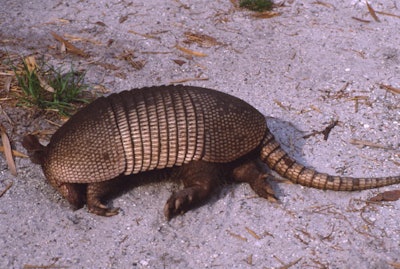 A nine-banded armadillo.
A nine-banded armadillo.Photo: Dr. A.D. Ali and Manny Nassar
Nine-banded armadillo, Dasypus novemcinctus, are native to the Americas. Armadillos are nocturnal and feed on insects, earthworms and other invertebrates. They nest in holes in the ground and may occupy different nests each night. Armadillos give birth to one litter per year, with four offspring in February/March. Their digging may undermine grave markers and other hardscapes. Trapping is difficult and not very effective. Try to reduce their food source by controlling white grubs and other subterranean insects. If legal, shooting them may be a last resort.
Green iguanas, Iguana iguana, are native to Central and South America and have invaded South Florida from along the Atlantic coast locations such as Martin, Broward, Miami/Dade, Monroe and Palm Beach counties. Iguanas have been known to fall out of trees and remain frozen on the ground in temperatures at 45 degrees Fahrenheit or colder, due to cold stunning.
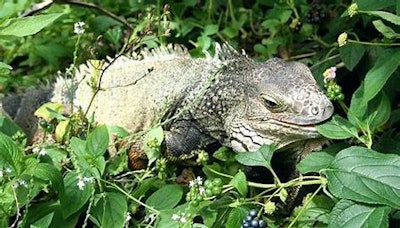 Green Iguana damage affects a wide variety of south Florida plant life.
Green Iguana damage affects a wide variety of south Florida plant life.Photo: Dr. A.D. Ali and Manny Nassar
Iguanas will cause a wide variety of damage by eating valuable landscape plants, shrubs and trees, as well as orchids and many other flowers. Their diet also extends to insects and spiders. They can dig burrows next to seawalls and foundations, increasing the chance of erosion and eventual collapse. When an iguana in the backyard feels threatened by people, it may bite, scratch or deliver powerful slashes with its muscular tail. Burrows dug along seawalls or against sidewalks and foundations can also cause structures to collapse, potentially endangering residents.
The droppings of iguanas along decks and docks and sometimes in swimming pools is also a frequent complaint. The easiest way to remove iguanas from your property is to trap them. It is best to use crickets as bait when trying to trap one.
EDITOR’S NOTE: This article was written by Manny Nassar, Shawn Fitzgerald and Christine Balk. The authors are technical advisors with The Davey Institute, The Davey Tree Expert Company.


